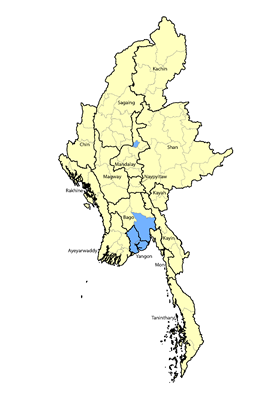Telugu is not the name of a specific ethnic group but is a regional language spoken as the first language by approximately 150 different people groups in India and around the world, and as a second language by another 580 groups.4 Telugu people, despite having lived in Myanmar for many generations, have few or no political rights or citizenship. Some have moved back to India if they were able, while others have remained marginalized in Myanmar.
Location: With an estimated 147,000 people, the Telugu are the fourth largest Indian language group in Myanmar. Their exact location is uncertain apart from those known to live in the two largest cities Yangon and Mandalay. Almost 100 million Telugu people live throughout the world, with 93 million concentrated in the Telugu homeland of Andhra Pradesh and Telangana in east-central India. More than 1.2 million Telugu people live in the United States, and the 2021 U.S. census revealed that Telugu is the fastest growing language in the country, having increased four-fold in just eight years between 2016 and 2024. The number of Telugu migrating to America has jumped markedly since the tech boom of the 1980s and 1990s, with many employed as IT workers in Silicon Valley. Among the many Telugu people who have made a mark in their adopted country are Nina Davuluri, who was crowned Miss America in 2014, and Satya Nadella, the CEO of Microsoft.
Telugu is part of the Dravidian language family, distantly related to other Dravidian languages, including Tamil and Malayalam. The four main dialects that are spoken among the Telugu in India (Northern, Central, Western and Southern Telugu) are also believed to be used in Myanmar.
Telugu men began migrating to British-controlled Burma for work in the 19th century, and by the 1931 census 159,759 Telugu people were in the country. In the beginning, “the role of Indian farmers was seasonal, as they would travel to Myanmar only during the prime rice season. In the intervening periods, they either went back to India or found small employment in Myanmar itself. While most Indians followed an annual system of cyclical employment and returned home once a year, many of them worked for three years in one go. Three-year contracts eventually became more and more common.”5 After anti-Indian riots and discrimination in the 1960s and a concerted effort by the government to drive Indians out of the country, the Telugu population had plummeted to just 50,000 by 1966.
Telugu influence is most widely seen in Myanmar's largest city, Yangon, where they have built a large, seven-story building to house the Telugu Association and a library. All Telugu people in the country have two names, a Burmese name and their Telugu name. Their Burmese name helps them integrate better into society, although they still face discrimination at both governmental and societal levels.
Almost nine out of ten Telugu people in Myanmar are Hindus, and several temples in Yangon were built by Telugu devotees. Despite most Telugu in Myanmar being proud Hindus, a significant number (approximately 11,000 people) are Christians, while several thousand Muslims are also part of their community.
Christianity has slowly grown in influence among Telugu people in Myanmar. Early Christian reports usually grouped Telugu outreach together with Tamil work, and churches, schools, and medical clinics all operated among them in Yangon by the early 20th century. In 1903, missionary T. Ellis reported “the total number of Tamil and Telugu Christians was 1,088, of whom 632 were communicants.”7 The Telugu Bible has been available since 1854, but it is nearly impossible to obtain in Myanmar due to the country's restrictions on printed matter coming from India.
Scripture Prayers for the South Asian, Telugu-speaking in Myanmar (Burma).
| Profile Source: Asia Harvest |













